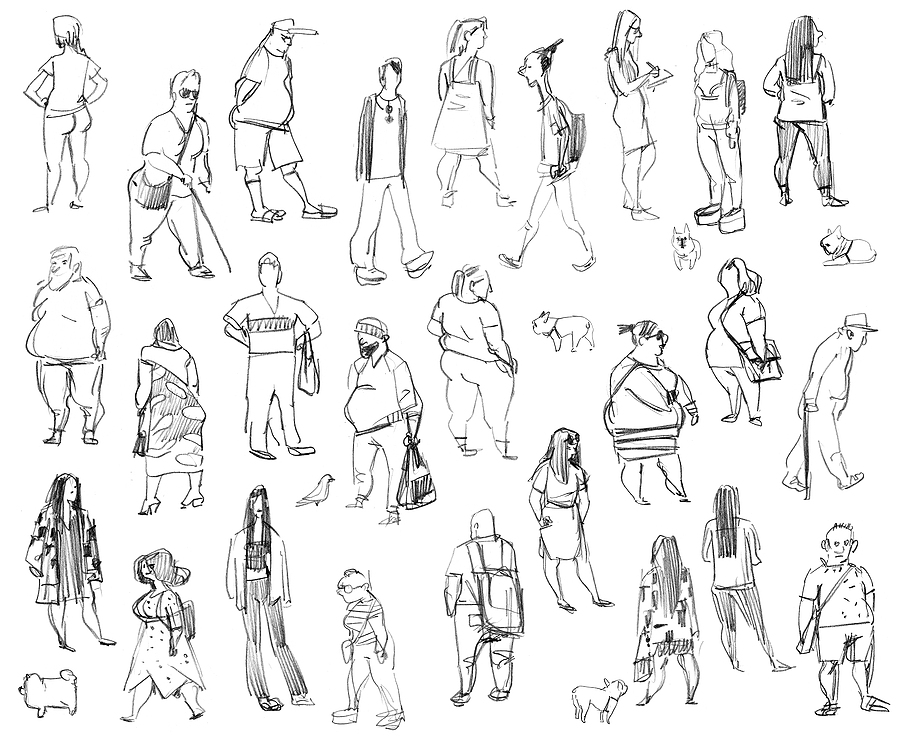I love creative writing. Creative writing can excite so many learners, but it can also terrify more than a few learners. I experimented with a number of activities that would help build experience and confidence with creative writing and this one—writing a character sketch—works as the most manageable and successful.
The Assignment
Write a character sketch: Write 2 to 4 connected paragraphs to describe a person in your life. Your character sketch should use strong and precise language and should be concise and efficient. Edit and proofread your final draft. A successful character sketch makes the reader feel like they know and understand the person.
The Details
- Choose a real person that you know well—a family member or a friend.
- Following the character sketch process that we discuss in class. Work to assemble and create a final character sketch with precise descriptive language.
- Your character sketch should be at least 2 to 4 paragraphs. It doesn’t have to be short however, it should be efficient.
- Remember, a character sketch is not a story. You are not telling a story.
- Find strategies for proofreading your writing.
The Setup
First, we do a jigsaw reading activity where small groups are assigned one of three examples of short character sketches. The group is tasked with becoming an expert at the text before they read the text to the class and answer questions. As a whole group, we then discuss what makes a good character sketch.
Second, we follow that up with a brainstorming session. Learners are prompted to pick a real person in their life and then to brainstorm:
- Looks: What they look like
- Actions: What that person often does
- Says: What that person might commonly say
- Reason: Why is this person important to you?
- Where: A likely setting
Meanwhile, we work on a number of simultaneous activities building adjectives and precise language. I show an image and write 5 password-style adjectives and we play “Guess My Adjectives.” I also share pairs of images (things that are similar, but different) and learners create a list of 5 adjectives for both images—words that would describe only one of those paired images.
Third, while we continue working on building vocabulary and brainstorming, learners assemble their character sketches.
Finally, we spend a little time on proofreading. First, I prepare a checklist of a few things to focus on. Otherwise, it’s useful to elicit a few different strategies that some learners might not know—such as checking spelling and grammar in Gmail or Microsoft Word or even Grammarly.com. Learners then swap their text with a classmate for peer feedback with a proofreading checklist.
Outcomes
Writing a character sketch, while managing to skirt all the trouble with narrative, exposes learners to creative writing in a way that is controlled without being overwhelming. My learners have gained so much confidence in their creative writing. In fact, some of their character sketches were so strong and vivid that they stayed in my memory!
The product is short and manageable, which is good for the learners, and it produces text that is mostly objective to assess, which is helpful for the instructor. While the product is definitive, the activity is remarkably expansive. It justifies working on precise language and vocabulary-building, not only for adjectives but also for verbs and adverbs. The class can do dictogloss activities with a number of character sketches. At higher levels, we even studied a few poems from Edgar Lee Masters’ Spoon River Anthology. The activity also encourages learners to consider editing and proofreading in a specific and meaningful way.
Further Opportunities
Meanwhile, that library of character sketches could be useful for further creative writing activities. Example: Character A and Character B meet (on a bus, on a plane, in the street). What happens? Write a story. Write a dialogue.
Or, with an especially eager and creative class: Write a Character Sketch about a stranger. Study (discreetly) a person in a public place—at a bus stop or a library or a coffee shop—and answer a number of questions about this person then write a character sketch.

